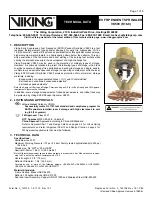
3.3 Function Description
From External User's View (Visitor)
Like normal doorbells, intercom buttons are provided with labels. The visitor finds the
appropriate button (e.g. Mr. Smith) and presses it. This activates the intercom, which
then dials the number pre-programmed for that button, The visitor can then hear the
ringing tone from the loudspeaker and the required (Mr. Smith's in this case)
telephone is ringing. If the intercom is connected to a telephone system, you can tag
the port the intercom is connected to in order to see on the ringing phone that it is
the intercom that is calling. When the called party answers the call, the visitor and the
called person can speak to each other and, if an electric lock is connected to the
intercom, the called person can open the door by entering the correct password on
the telephone keypad to activate the door or barrier. When the caller hangs up, the
intercom detects the PBX or analogue line tone and hangs up too. The intercom also
hangs up when it "hears" the busy tone or if the call takes more time than as pre-
programmed to connect. You can pre-program the amount of time that you have to
speak into the microphone, but when you reach the programmed time, the unit will
send a warning tone 10 seconds before hanging up so that the called party can extend
the call if required.
Notes
If the visitor presses another button during the call, the intercom hangs
up for a few seconds before dialling the new number.
If a button is pressed that has no number stored within it, the intercom
picks up the line, sends a refusal tone (refer to the Signals Overview)
and hangs up.
If the visitor presses the same button during the call, the intercom may
hang up (can be programmed to stop this feature if required).
The above mentioned rules are only applied if the Automatic Multiple
Number Dialling mode is OFF. For this special mode refer to the
Automatic Multiple Number Dialling section.
CIE-Group Ltd, www.cie-group.com 40 / 63
















































